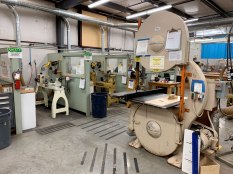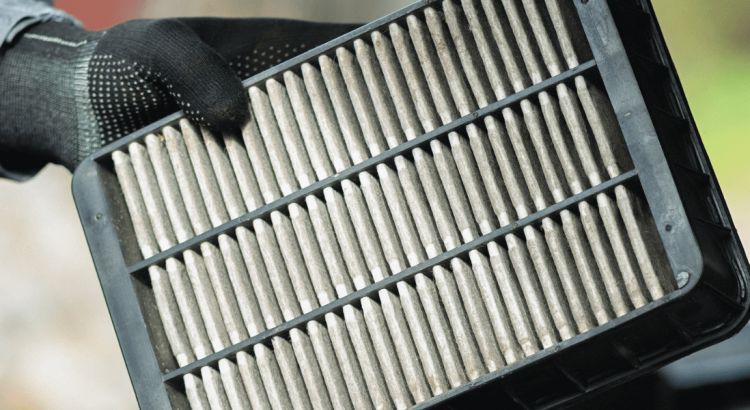While they provide security and connect us to the outside world, windows are some of the biggest detriments to home energy efficiency. Air-conditioned or heated air can pass through them more readily than wall spaces, meaning windows can be a huge source of heat loss. Luckily, insulated glass (a relatively new invention as far as windows go) combats some of this energy loss.
What is insulated glass?
Insulated glass is a unit made up of two or more panes of glass sealed and sandwiched together with an air space between them. This space is filled with air, argon, or krypton gas. This system keeps interior and exterior air temperatures separate more efficiently than single panes of glass.
The term “insulated glass” is somewhat of a misnomer. The glass itself is not insulated, but the unit as a whole is. This unit consists of the exterior glass pane, a spacer bar around the perimeter of the glass, a seal, a desiccant material to absorb moisture, and the interior pane. The spacer bar creates a consistent, even gap between the glass panes, leaving space for the inert gas. Some insulated glass units (or “IG units”) feature three or four panes, with gas filling the spaces between them.
All of these components, including the glass, work together as one unit. The way to feasibly repair an insulated glass unit is to either remove the entire insulated glass from the window frame unit and replace it, or replace the entire sash (including the frame).
Types of insulated glass
While the concept of insulated glass does not change among the varieties, there are a few types of insulated glass units to be aware of. They include double- and triple-pane (or glazed), as well as those with argon or krypton gas between the panes.
- Double-pane insulated glass units feature two panes of glass with an insulating gas or air between them. These are the most common forms of insulated glass units and they’re relatively inexpensive.
- Triple-pane insulated glass units feature an interior pane, an exterior pane, and a pane between them. This creates two spaces for insulating gas or air, providing more efficiency than double-glazed windows alone.
- Krypton gas is the most efficient type of gas found in insulated glass units, but it is expensive. Krypton gas is available in both double- and triple-pane window units.
- Argon gas is the most common inert gas found in insulated glass units due to affordability and efficiency. This gas is more efficient than units with air alone but less efficient than Krypton.
Also, these insulated glass units aren’t just for windows. They’re equally as popular and effective in exterior entry doors, sliding doors, french doors, and other glass door exterior openings. Most of these units feature tempered glass, making them safer in the home but also easier to ship.
How does insulated glass work?
Temperatures travel along thermal bridges, and this bridge can be anything that stretches from one point to another. Wood, metal, glass, and other solid materials act as thermal bridges, transferring heat readily. Just as the name suggests, the thermal bridge is like a highway for heat transfer.
In the case of a single-pane window, the glass itself works as an excellent bridge. As heated air from within the home hits the interior of the glass pane on a cold winter day, it then transfers through the glass and dissipates outside. The reverse applies to hot exterior air on a summer day.
Insulated glass works by removing a thermal bridge between the exterior and interior window panes. The space between the panes creates an effective gap that traps the hot or cold air, preventing the bridging effect. On top of the thermal break, the gas itself is a better insulator than air alone, as both Krypton and Argon are very dense and conduct heat less readily.
Understanding Solar Heat Gain Coefficient (SHGC)
Insulated glass windows and doors can control solar heat gain. Solar heat gain refers to how easily the sun’s rays penetrate through the glass. The measurement used to quantify the unit’s effectiveness is the Solar Heat Gain Coefficient (or SHGC). The lower the SHGC, the better the window is at preventing the sun’s rays from heating the space. The higher the heat gain, the more heat the window allows in.
In colder, northern climates, having a high SHGC can be a benefit, as the sun can more easily warm the space on cold winter days. However, in southern climates, a lower SHGC is necessary to prevent the hot summer sun from turning the home into a greenhouse.
While they provide security and connect us to the outside world, windows are some of the biggest detriments to home energy efficiency. Air-conditioned or heated air can pass through them more readily than wall spaces, meaning windows can be a huge source of heat loss. Luckily, insulated glass (a relatively new invention as far as windows go) combats some of this energy loss.
What is insulated glass?
Insulated glass is a unit made up of two or more panes of glass sealed and sandwiched together with an air space between them. This space is filled with air, argon, or krypton gas. This system keeps interior and exterior air temperatures separate more efficiently than single panes of glass.
The term “insulated glass” is somewhat of a misnomer. The glass itself is not insulated, but the unit as a whole is. This unit consists of the exterior glass pane, a spacer bar around the perimeter of the glass, a seal, a desiccant material to absorb moisture, and the interior pane. The spacer bar creates a consistent, even gap between the glass panes, leaving space for the inert gas. Some insulated glass units (or “IG units”) feature three or four panes, with gas filling the spaces between them.
All of these components, including the glass, work together as one unit. The way to feasibly repair an insulated glass unit is to either remove the entire insulated glass from the window frame unit and replace it, or replace the entire sash (including the frame).
Types of insulated glass
While the concept of insulated glass does not change among the varieties, there are a few types of insulated glass units to be aware of. They include double- and triple-pane (or glazed), as well as those with argon or krypton gas between the panes.
- Double-pane insulated glass units feature two panes of glass with an insulating gas or air between them. These are the most common forms of insulated glass units and they’re relatively inexpensive.
- Triple-pane insulated glass units feature an interior pane, an exterior pane, and a pane between them. This creates two spaces for insulating gas or air, providing more efficiency than double-glazed windows alone.
- Krypton gas is the most efficient type of gas found in insulated glass units, but it is expensive. Krypton gas is available in both double- and triple-pane window units.
- Argon gas is the most common inert gas found in insulated glass units due to affordability and efficiency. This gas is more efficient than units with air alone but less efficient than Krypton.
Also, these insulated glass units aren’t just for windows. They’re equally as popular and effective in exterior entry doors, sliding doors, french doors, and other glass door exterior openings. Most of these units feature tempered glass, making them safer in the home but also easier to ship.
How does insulated glass work?
Temperatures travel along thermal bridges, and this bridge can be anything that stretches from one point to another. Wood, metal, glass, and other solid materials act as thermal bridges, transferring heat readily. Just as the name suggests, the thermal bridge is like a highway for heat transfer.
In the case of a single-pane window, the glass itself works as an excellent bridge. As heated air from within the home hits the interior of the glass pane on a cold winter day, it then transfers through the glass and dissipates outside. The reverse applies to hot exterior air on a summer day.
Insulated glass works by removing a thermal bridge between the exterior and interior window panes. The space between the panes creates an effective gap that traps the hot or cold air, preventing the bridging effect. On top of the thermal break, the gas itself is a better insulator than air alone, as both Krypton and Argon are very dense and conduct heat less readily.
Understanding Solar Heat Gain Coefficient (SHGC)
Insulated glass windows and doors can control solar heat gain. Solar heat gain refers to how easily the sun’s rays penetrate through the glass. The measurement used to quantify the unit’s effectiveness is the Solar Heat Gain Coefficient (or SHGC). The lower the SHGC, the better the window is at preventing the sun’s rays from heating the space. The higher the heat gain, the more heat the window allows in.
In colder, northern climates, having a high SHGC can be a benefit, as the sun can more easily warm the space on cold winter days. However, in southern climates, a lower SHGC is necessary to prevent the hot summer sun from turning the home into a greenhouse.
Advantages of insulated glass
Insulated glass does just what it says in the name, insulate the home from outdoor temperatures. Plus, they help reduce energy costs.
- Help maintain consistent indoor temperatures. Insulated glass units can help maintain comfort within a home. These windows often feel considerably less drafty than single-pane windows, allowing the home to feel cozier on a cold winter day. Insulating windows will also allow less hot air into the space on a hot day, meaning the air conditioner will be able to maintain a more constant temperature throughout the day.
- More energy efficient. Since windows and doors that contain insulated glass units are more efficient than those that don’t, homes will experience less energy consumption. By preventing the conditioned air (whether heated or cooled) from leaving the home, the furnace, boiler, electric heat, or air conditioner will run less often, making the home more energy-efficient. Not only is this a benefit when the energy bill comes in, but it’s also better for the environment. Homeowners who upgrade from single-pane glass windows to insulated double-pane windows can expect a boost in home value. Expert opinions vary, but homeowners can expect around 80% to 85% return on investment for replacing their single-pane windows with insulated glass units.
Disadvantages of Insulated Glass
The benefits of using insulated glass comes with a few downsides, being that the units are more expensive than single glass and they are difficult—if not, impossible—to repair when broken.
- Expensive. Windows and doors containing insulated glass units are significantly more expensive than those with single glass panes. While the return on investment and energy savings are typically worth the money, the initial cost can be staggering.
Difficult to repair. Insulated glass units is that they’re more difficult to repair. Once the glass cracks, the inert gas escapes. And, even if the glazier replaces the cracked pane, they’ll be unable to refill the gap between the panes with gas. For this reason, it’s best to simply replace the IG unit with a new, gas-filled unit.
MT Copeland offers video-based online classes that give you a foundation in construction fundamentals with real-world applications.
Classes include professionally produced videos taught by practicing craftspeople, and supplementary downloads like quizzes, blueprints, and other materials to help you master the skills.
Top Courses
How to Read Blueprints

Construction Math

Introduction to Cabinetry

Commercial Blueprints

How to Build Shaker Cabinets













